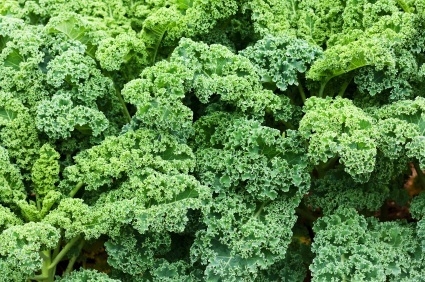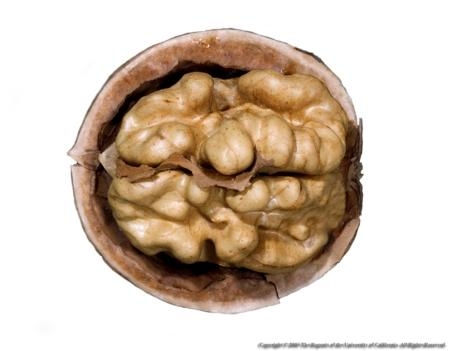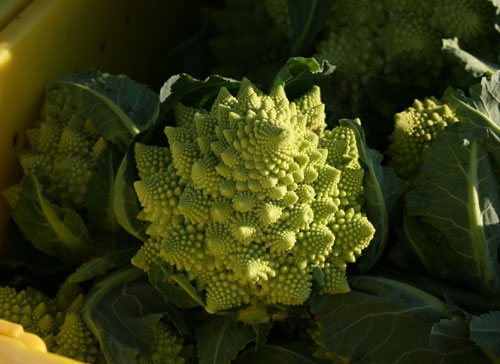
Posts Tagged: kale
Herbicide screen in Brassica vegetables
Hello We have been evaluating several herbicides on direct-seed Brassica vegetables: Bok choi,...
2020.01 IR-4 bokchoi raab Report 012121
2020.02 IR-4 collards & mizuna report 012121
2020.03 IR-4 mustard green & radish report 012121
2020.04 .05 IR-4 Zeus Trans Brassica Report 012121
New findings on benefits of “biofactors” in food
Can what we eat help fix what ails us? Research increasingly suggests the answer is “yes.” Many foods contain biofactors — biologically active compounds — that may prevent and treat illnesses including asthma, diabetes and heart disease, according to new studies from the UC Davis Center for Health and Nutrition Research (CHNR).
The upcoming July-September California Agriculture journal (to be posted by July 11) reports UC research into plant compounds (phytochemicals) that can help prevent or treat disease. The findings stem from pilot projects at the center, as well as other UC research. Articles focus on how micronutrients, biofactors and phytochemicals (plant compounds) can help reduce the risk of chronic diseases.

Phytochemicals and health. Epidemiological studies link particular diets to less risk of chronic diseases. Notably, the traditional Mediterranean diet — mostly vegetables, fruits and whole grains, with moderate amounts of nuts, olive oil and red wine — is associated with lower rates of heart disease, cancer, and Parkinson's and Alzheimer's diseases. However, it has yet to be firmly established that specific phytochemicals in our diets can protect against diseases. Nutritionists therefore advise eating a wide variety of plant-based foods rather than taking supplements.

Mitochondrial nutrients and aging. The Mediterranean diet is rich in plant compounds that boost mitochondria (organelles in our cells that convert glucose and other nutrients into energy) and so are known as mitochondrial nutrients. When mitochondria are scarce or have genetic defects that keep them from working properly, this can generate toxic metabolites and damaging free radicals.
“Mitochondria are central to aging,” says UC Irvine aging expert Edward Sharman. “Improving their function may modulate or delay the onset of diseases related to aging, such as type 2 diabetes and age-related macular degeneration.” Mitochondrial dysfunction also plays a key role in chronic illnesses such as heart disease, type 2 diabetes and inflammatory diseases such as arthritis.

A new essential nutrient? Another promising mitochondrial nutrient is pyrroloquinoline quinone (PQQ), which was first found in nitrogen-fixing soil bacteria and is now known to be ubiquitous.
“We’re exposed to PQQ all the time at low levels,” says CHNR co-director Robert Rucker, a UC Davis nutrition professor. “It can be derived from amino acids found in stellar dust, and stellar dust is what the earth is made of.”
While Escherichia coli and other common gut bacteria do not make PQQ, the soil bacteria provide it to the plants in our diet. Good sources include fermented soybeans, wine, tea and cocoa.
Animal studies show that PQQ affects health markedly. Rucker and his colleagues found that depriving rats of PQQ compromised their immune systems, and retarded their growth and reproductive rates. In contrast, restoring PQQ to their diets reversed these effects and returned them to good health. Moreover, PQQ stimulated nerve growth and counteracted aging in cultured cells.
Rucker and his colleagues found that, like hydroxytyrosol, PQQ increases the number of mitochondria in cells. “It’s also an extremely good antioxidant and anti-inflammatory agent,” he says.
Personalized medicine. Understanding what biofactors do in our bodies could ultimately lead to personalized medicine, where nutrition-based treatments are tailored to the particulars of each person’s biochemistry. This individual variation at the biochemical level may help explain the inconsistent outcomes of research on omega-3 fatty acids and inflammation.
“The studies are mixed,” says UC Davis pulmonologist Nicolas Kenyon. “Some have shown little effect and others have shown that omega-3 fatty acids can reduce arthritis and inflammation in blood vessels.”

This genotyping is targeted to DNA sequences associated with asthma and so is not comprehensive.
“Some people are nervous about genome-wide analysis, which is scary because none of us is perfect,” Kenyon says. “But people are more interested when the focus is specific screening that could increase their chances of treatment.”
Cruciferous vegetables help fight cancer
The role fresh vegetables play in maintaining good health is no secret. But, according to a University of California scientist, eating from a particular group of vegetables can help protect the body from lethal illnesses like cancer.
These extraordinary vegetables are in the cruciferous family - including broccoli, kale, cauliflower and Brussels sprouts.
UC Berkeley toxicology professor Len Bjeldanes says cruciferous vegetables are good sources of the natural chemical compound diindolilmentano, or DIM. DIM suppressed harmful cells in studies with rats and Bjeldanes believes it can have the same effect in combating cancer in humans.
"We were really surprised to see that we've got about an 80 percent reduction in the amount of virus that could proliferate in those animals when we gave them the combination with DIM," said Bjeldanes, who is conducting the experiments with colleague Gary Firestone, a molecular biologist. "This is really a very strong indication that this is helping the body deal with these immune insults, like in this case a virus."
Bjeldanes said prostate cancer is sensitive to androgen, a male hormone.
“This makes our finding that cruciferous plants contain an anti-androgen important,” he said. "DIM is the first example of a naturally occurring anti-androgen from plants that we know of. So this is quite remarkable."
DIM may also play a role in suppressing breast cancer.
"We had been studying for some time the effects of the vegetables on mammary and breast cancer and there's a fair amount of information that says indeed, they are in fact protective of mammary and breast cancer," he said.
The scientists will next determine whether protective effects of DIM found in experiments with rats will manifest themselves in human studies.
Bejeldanes cautions that eating cruciferous vegetables is not a miracle cure for cancer. But he encourages people to include vegetables rich in DIM in their diets. The vegetables will give a boost to the body’s immune system, enabling it to defend against all manner of illnesses.
"These are chemicals that are important in activating the immune response and help the body fight the bad guys, like bacteria or viruses,” he said.
To get the most immune-boosting compounds from broccoli and other cruciferous vegetables, nutrition experts suggest eating them raw, in salads, or lightly steamed. Boiling the vegetables destroys more than half the nutrients.
(Original article by Alberto Hauffen. Adapted to English by Jeannette Warnert.)

Romanesco cauliflower is one of the more unusual cruciferous vegetables.
